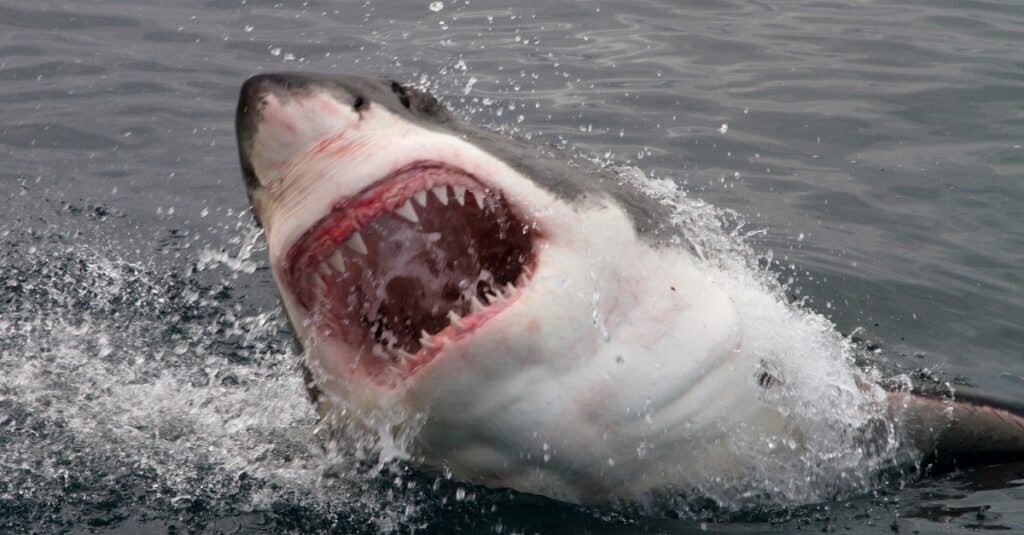
A great white shark is attacking.
©iStock.com/Peter_Nile
Hilton Head shark attacks do not happen as often as people think they do. According to ISAF since 1837, there have been 111 reported shark-human encounters in South Carolina, and 27 of those attacks happened in Beaufort County. When shark encounters happen, galeophobia (the fear of sharks) causes people to panic and feel threatened.
Unprovoked shark attacks occur because the animal is naturally curious or mistakes a splashing human as a source of food. Sharks are aggressive predatory animals, but they are not malicious, and they do not attack for no reason. The majority of shark attacks happen because humans provoke the animal by trying to touch it or causing the animal to feel threatened.
Hilton Head has had several shark attack incidents in the past. The latest incident was in July 2023, when a 60-year-old man was nipped on the foot while swimming in two to three-foot-deep water at Sea Pines Beach. The man was not seriously injured.
Let’s dive into the types of sharks found in these waters, the frequency of past attacks, and how to avoid being a shark snack when you swim here.
Sharks Found Near Hilton Head
Black Tip or Black-nosed: Carcharhinus Acronotus
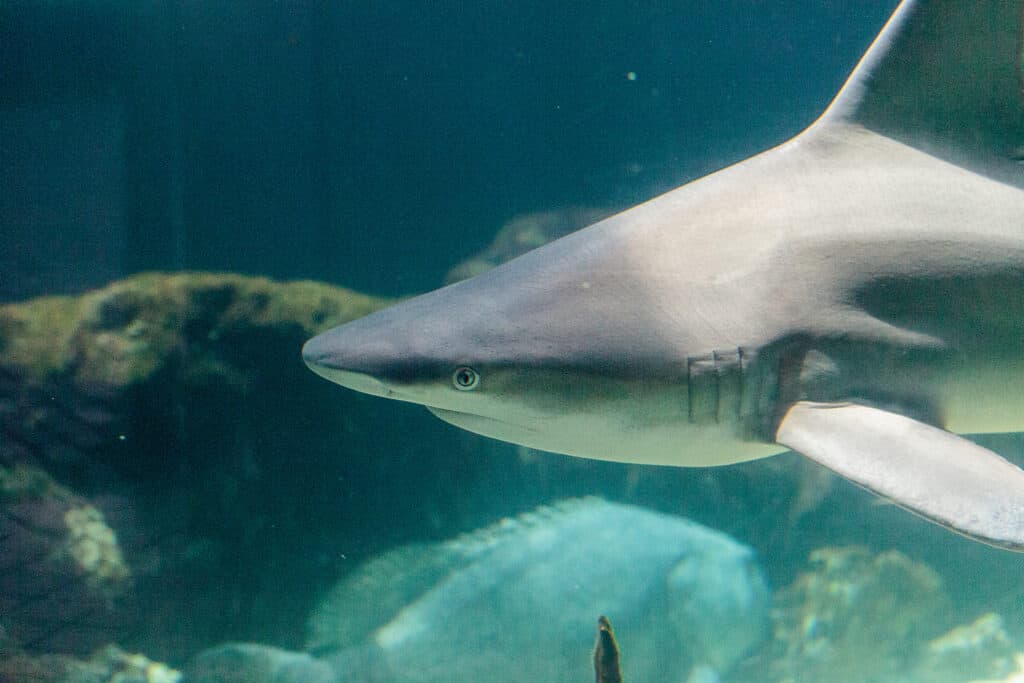
The blacknose shark is a requiem shark that lives in tropical and subtropical waters.
©iStock.com/LagunaticPhoto
Blacknose or blacktip sharks reach lengths of four feet. They primarily feed on small fish. There are no links suggesting that black-nose sharks attack humans. When they feel threatened, they will take an aggressive pose; however, humans pose a greater threat to the shark than the shark does to humans.
The warm waters around the Hilton Head area attract the blacknose and other sharks.
Bull Shark
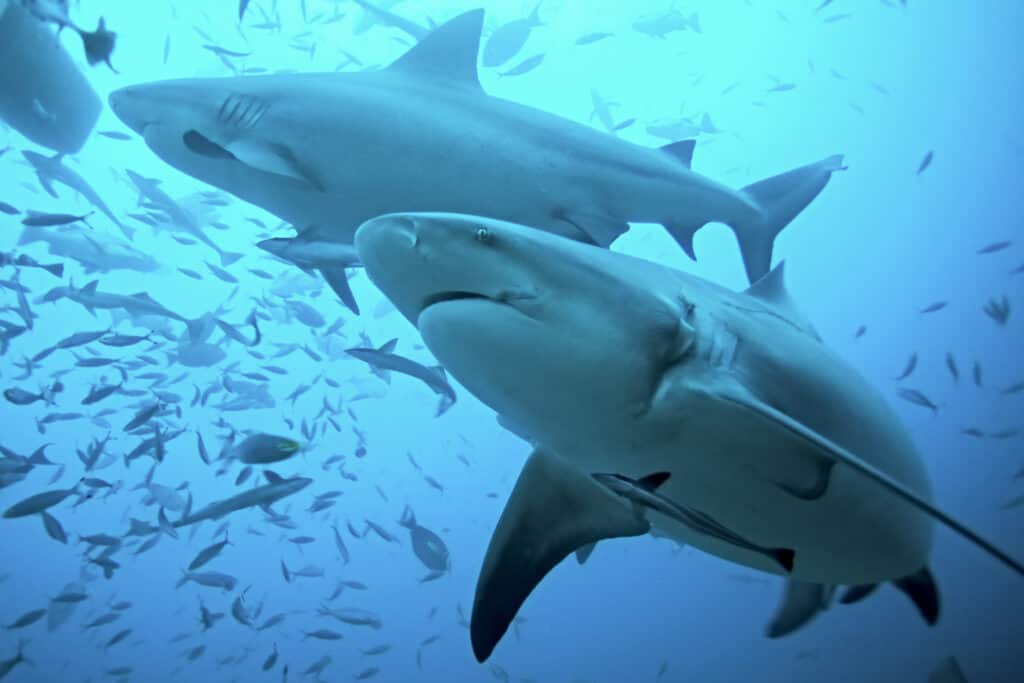
The most aggressive shark is the bull shark.
©Martin Prochazkacz/Shutterstock.com
Bull sharks are responsible for Hilton Head shark attacks because they are the most aggressive due to their high testosterone levels. This species prefers shallow ocean water, and that places them in greater danger of coming into contact with humans. Bull sharks are one of three species that are the biggest threat to humans.
Dusky Shark
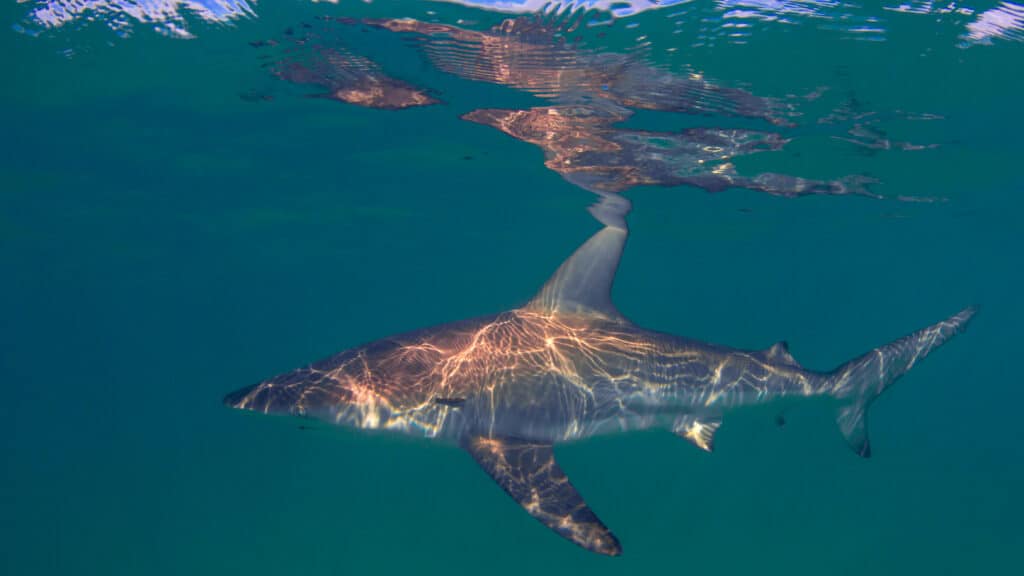
A dusky shark is found in tropical and subtropical waters.
©Rich Carey/Shutterstock.com
Dusky sharks are not a great threat to humans, however, these animals like shallow waters, and that increases the odds of human and shark encounters. The dusky sharks primarily feed off of bottom-dwelling fish rays, and smaller sharks.
Finetooth

Fine-tooth sharks do not attack humans.
©Brenda Bowling, tpwd.texas.gov / public domain – License
The fine-tooth shark species has never been recorded in a human-shark encounter. However, when this animal is threatened or caught it thrashes violently and snaps at anything within its reach. An adult fine-tooth shark will be between five and six feet in length.
Great Whites
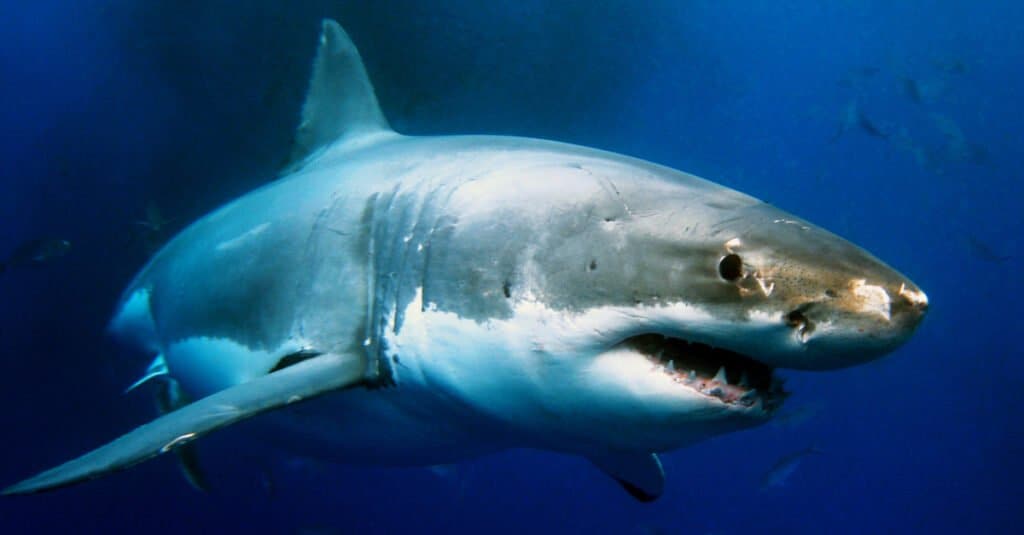
The world’s largest predatory fish, great white sharks, commonly weigh a few thousand pounds.
©Alexius Sutandio/Shutterstock.com
Great white sharks have been responsible for Hilton head shark attacks in the past. The great white shark is one of the best-known species, and it represents one of the three sharks most likely to attack a human. When scary shark movies are made the great white is often the focus animal.
BonnetHead

Bonnethead sharks are called bonnies or scallop heads.
©Ian Scott/Shutterstock.com
Bonnies, or scalloped heads, are common names for the bonnethead shark. The Bonnethead is a species of hammerhead shark. Scallop heads are not normally aggressive. However, if you catch one of them you may be bitten while releasing the animal back into the water.
Lemon Shark
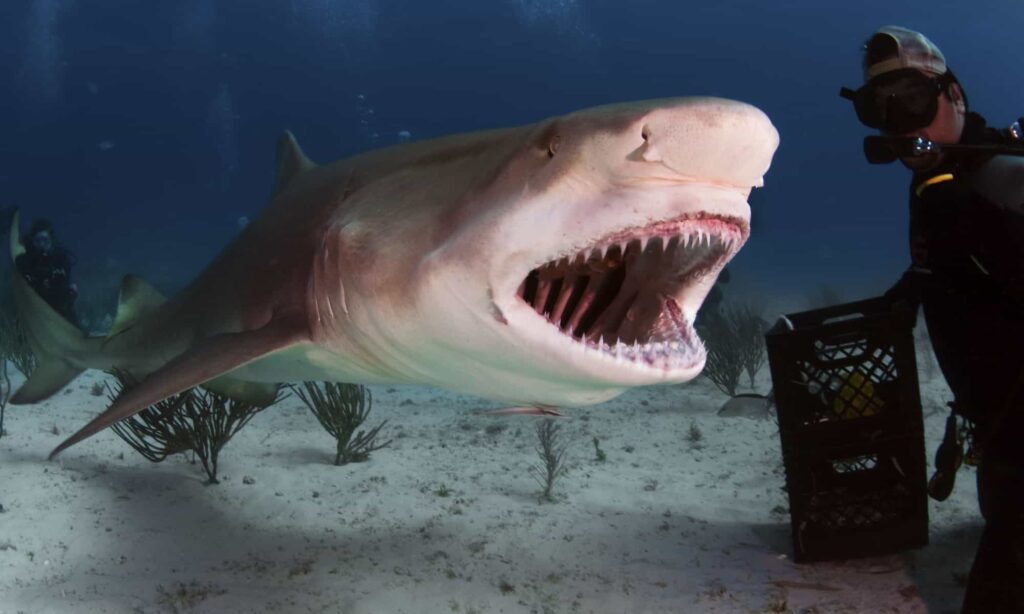
Lemon sharks are not aggressive.
©Greg Amptman/Shutterstock.com
The lemon sharks can weigh as much as 551 pounds. They are not an aggressive species. They can grow to lengths of 12 feet and the yellow-brown colors of their skin help them to go unnoticed in the waters around Hilton Head. This species is reportedly shy and avoids human contact when it can.
Nurse Shark

Nurse sharks are peaceful animals.
©Nigel Marsh/iStock via Getty Images
The nurse shark is a large fish that is peaceful. There have been no records of this species attacking humans. These sharks are slow-moving and non-aggressive, however, their size of up to 14 feet is intimidating. They are unique because they have two fins on their back and one on their tail. They also give birth to 20 to 40 babies at one time.
Sharpnose
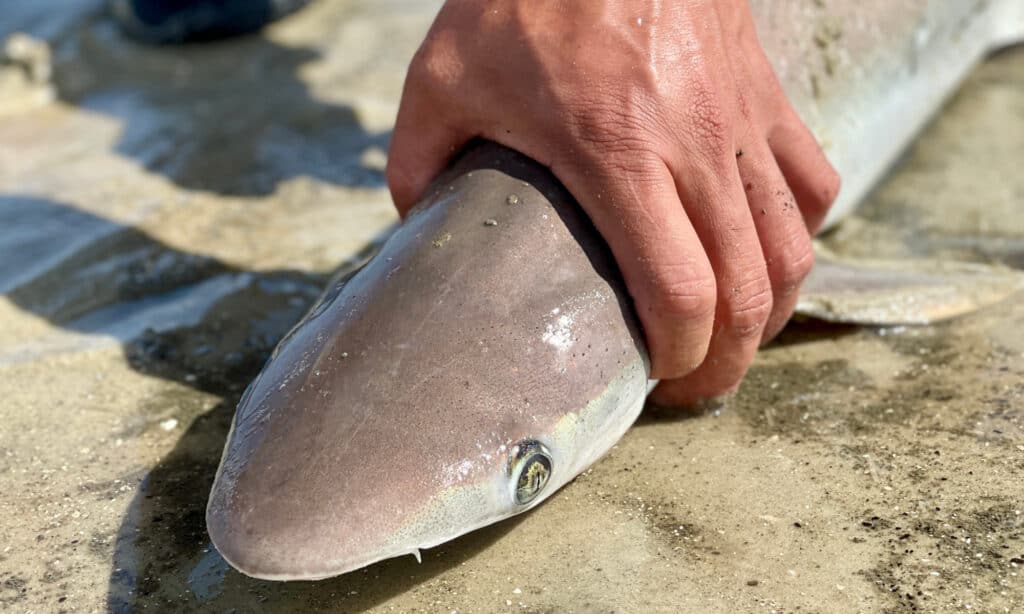
Sharpnose sharks pose a moderate threat to humans.
©Finley Del/Shutterstock.com
These sharks are found in waters less than 32 feet deep, however, they have been located in waters 920 feet deep. Sharpnose sharks are not a threat to humans, however, they are fished for and eaten by humans. In the winter they migrate to deeper waters, and during the summer they are found closer to shore.
Spinners

Spinner sharks
are not dangerous to humans.
©Bram Nieuwenhuis/Shutterstock.com
Shallow waters less than 328 feet deep are home to spinner sharks. This species of shark will grow to be up to nine feet in length. They are called spinner sharks because they leap out of the water and spin three times. Humans use spinner sharks for their meat, oils, and skin. Although they are not dangerous they can be excited when they are feeding.
Sand Tiger Sharks
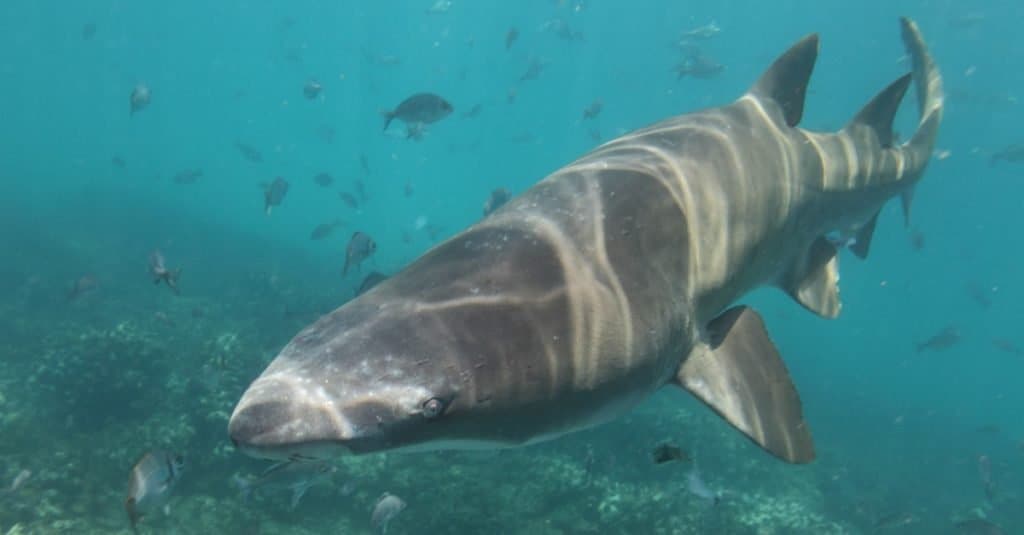
Sand
tiger
sharks or grey nurse sharks are non-aggressive.
©Alessandro De Maddalena/Shutterstock.com
The presence of tiger sharks increases Hilton Head shark attacks. Sand Tiger sharks grow to lengths of 10.5 feet and weigh up to 350 pounds. Their size makes them intimidating. When provoked a sand tiger shark will bite a human. This species gulps water and holds it in its stomach so it can hover motionless in water.
Hilton Head Shark Attacks Since 2006
| Year | Location |
| 2006 | Hilton Head Island in Beaufort County |
| 2015 | Hilton Head Island in Beaufort County |
| 2018 | Hilton Head Island in Beaufort County |
| 2020 | Folly Beach |
| 2021 | Barrington, Beach, Hilton Head |
| 2021 | Burkes Beach, Hilton Head |
| 2021 | Hilton Head Island in Beaufort County |
| 2022 | Palmetto Dunes |
| 2023 | Sea Pines |
Why Sharks Are Drawn To Hilton Head

Beach walking at sunrise-Hilton Head Island, SC
©iStock.com/William Reagan
People love Hilton Head South Carolina because the place is beautiful the summers are warm, and the residents are friendly. Sharks love Hilton Head because the waters are warm and the food supply is plentiful. When participating in water activities in this area watch for sharks.
Quick Tips To Avoid Hilton Head Shark Attacks
- Do not swim alone. Sharks are less likely to attack a group of people.
- Avoid the water at sunset and sunrise. Sharks are most active at these times of day.
- Do not swim in areas where other people are fishing. The fisherman’s bait will attract sharks.
- Remove shiny jewelry when going in the water. Shiny jewelry resembles fish scales to sharks.
- If you see a lot of seabirds diving into the water avoid that area. The birds diving indicate fish in the area and sharks feed on fish.
- Get out of the water if a shark is spotted. Do not risk swimming when a shark is present.
- Swim in an area that has a lifeguard on patrol. Lifeguards warn swimmers if they see a shark in the water.
- Do not wear bright-colored clothing. Sharks are drawn to the contrast of the bright colors against the ocean waters.
- Do not splash or make erratic movements when in the water. Erratic movements and splashing make you look like possible food.
- Avoid murky water. You cannot see the shark in murky waters.
- If you see fish jumping avoid that area. Sharks eat fish.
FAQs
Do most shark attacks happen in shallow or deep water?
Human encounters with sharks occur most often in shallow waters. Shark attacks are scary; however, they are not as frequent as people believe. In the United States, there are about 19 shark attacks each year.
What kind of shark is most likely to attack swimmers?
Tiger sharks, bull sharks, and great white sharks are the most dangerous species. However, the bullshark is the animal with the highest testosterone levels.
What are the odds of being bitten by a shark while swimming?
1 in 3,748,067 are the odds of you being bitten by a shark.
What state has the most shark attacks each year?
Florida has the highest number of shark attacks each year.
The photo featured at the top of this post is © iStock.com/Peter_Nile
Thank you for reading! Have some feedback for us? Contact the AZ Animals editorial team.






